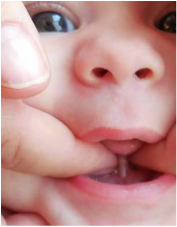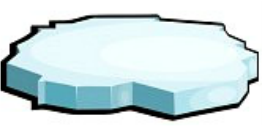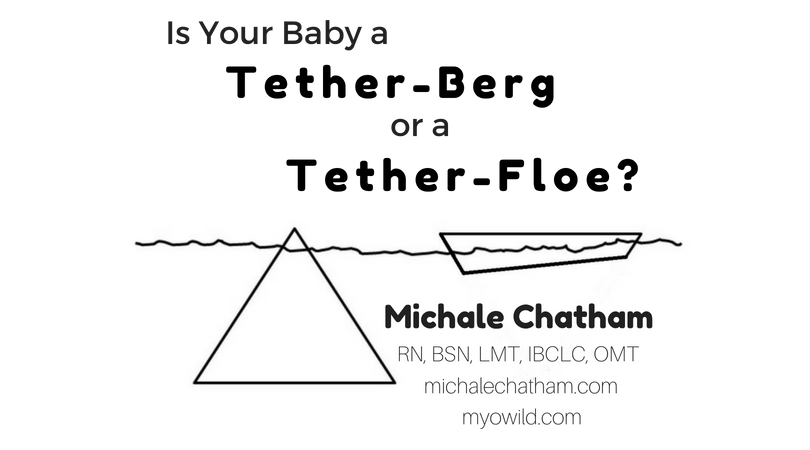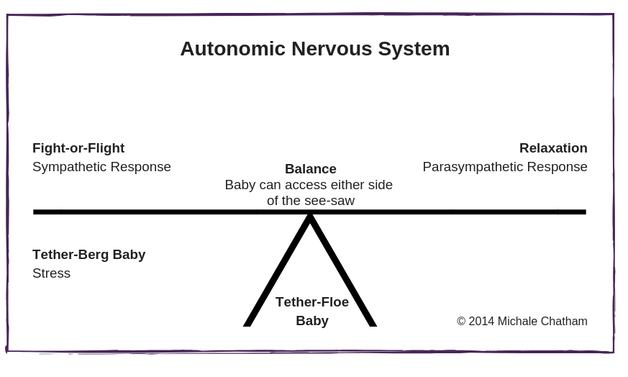 image: www.staciebingham.com image: www.staciebingham.com We all know the definition of iceberg: a large mass of ice located in the water with just a visible portion protruding above the water's surface. Ice floes, by contrast, are flat floating sheets of ice with no base underwater. Both beautiful and dangerous, icebergs and ice floes present no issue as long as you can sail around them or sail over them. Often babies presenting with feeding issues can be viewed as icebergs or ice floes. These babies present with Tethered Oral Tissues (TOT), or oral ties. Upper Lip Tie and Tongue Tie have been implicated as causes of Oral Dysfunction related to both breastfeeding and bottle feeding. Some moms who elect to have these tethers released via scissors or laser, find huge results from symptoms like: nipple trauma and pain; leaking milk around the mouth; gas; reflux (both silent and violent/vomiting); difficulty sleeping; snoring; weight loss; clicking-while-nursing; colic; and bowel issues, such as constipation. Sometimes the release of tethers seems like a miracle or cure-all for everything -- even things not directly related to oral tethers -- such as hating the carseat or disliking diaper changes. The type of baby who gets a miracle cure from having oral tethers released is dubbed the "Tether-Floe."  Tether-Floe babies have all of their issues floating on the top of the water, so to speak. The tether is the clue and solution to their breastfeeding problems. For them, the laser or scissor frenectomy IS the answer. Poof! The problems begin to melt away, whether quickly or slowly, and within a short amount of time (days to weeks) these babies are breastfeeding like champs, gaining weight, and not hurting their moms any longer. For them, there were no underlying issues (or at least it seems so). The presenting problem is addressed and the breastfeeding relationship is saved. Tether-Floe babies may not require much in aftercare of the procedure site, may not require bodywork or special interventions to help with head movement, seem to latch themselves, and moms often don't seek out the help of a lactation consultant since their issues seem resolved. It's an almost-magical experience for them.  Tether-Berg babies have identifiable oral tethers (or ties) and Oral Dysfunction. They present with one or more classic tie symptom: nipple trauma for mom, gassiness, fussiness, fighting at the breast, hating the car seat, reflux, colic, clicking, popping off of the breast, etc. Mothers seeking frenectomy for these issues will have the tip of the iceberg addressed through release of tissue either by laser or scissors. After a healing period, this group finds not much has changed -- baby is still causing nipple trauma, weight gain is still flat, clicking is still present, baby is still fussy or gassy, etc. For them, the mass of ice below the surface must be addressed before relief is gained. So what went wrong? Well, probably nothing. This is a baby whose other issues were not noticed, and therefore not treated. This baby needs what is known as a multidisciplinary approach to deal with the symptoms that remain, because they are below the surface of the tether. Remember how the Tether-Floe baby didn't seem to need much help afterwards from other professionals such as lactation consultants or Bodyworkers? The Tether-Berg baby does -- this baby needs professionals from different backgrounds to help read what the body is saying internally. The type of baby who does not get relief after having oral tethers released is dubbed the "Tether-Berg." Tethered Oral Tissues are |
Michale Chatham, BSN, LMTArchives
June 2022
Categories |



 RSS Feed
RSS Feed